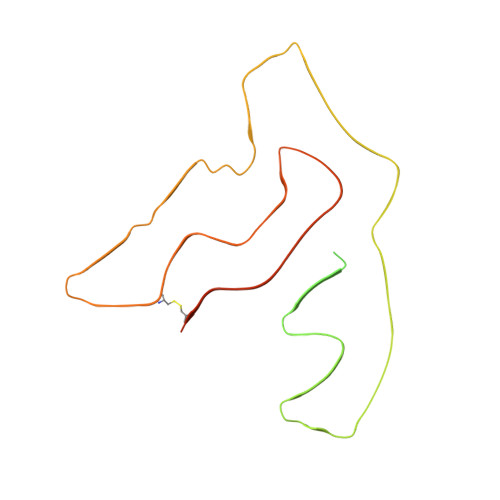Amyloid fibrils in FTLD-TDP are composed of TMEM106B and not TDP-43.
Jiang, Y.X., Cao, Q., Sawaya, M.R., Abskharon, R., Ge, P., DeTure, M., Dickson, D.W., Fu, J.Y., Ogorzalek Loo, R.R., Loo, J.A., Eisenberg, D.S.(2022) Nature 605: 304-309
- PubMed: 35344984
- DOI: https://doi.org/10.1038/s41586-022-04670-9
- Primary Citation of Related Structures:
7SAQ, 7SAR, 7SAS - PubMed Abstract:
Frontotemporal lobar degeneration (FTLD) is the third most common neurodegenerative condition after Alzheimer's and Parkinson's diseases 1 . FTLD typically presents in 45 to 64 year olds with behavioural changes or progressive decline of language skills 2 . The subtype FTLD-TDP is characterized by certain clinical symptoms and pathological neuronal inclusions with TAR DNA-binding protein (TDP-43) immunoreactivity 3 . Here we extracted amyloid fibrils from brains of four patients representing four of the five FTLD-TDP subclasses, and determined their structures by cryo-electron microscopy. Unexpectedly, all amyloid fibrils examined were composed of a 135-residue carboxy-terminal fragment of transmembrane protein 106B (TMEM106B), a lysosomal membrane protein previously implicated as a genetic risk factor for FTLD-TDP 4 . In addition to TMEM106B fibrils, we detected abundant non-fibrillar aggregated TDP-43 by immunogold labelling. Our observations confirm that FTLD-TDP is associated with amyloid fibrils, and that the fibrils are formed by TMEM106B rather than TDP-43.
Organizational Affiliation:
Departments of Chemistry and Biochemistry and Biological Chemistry, UCLA-DOE Institute, and Molecular Biology Institute, UCLA, Los Angeles, CA, USA.















